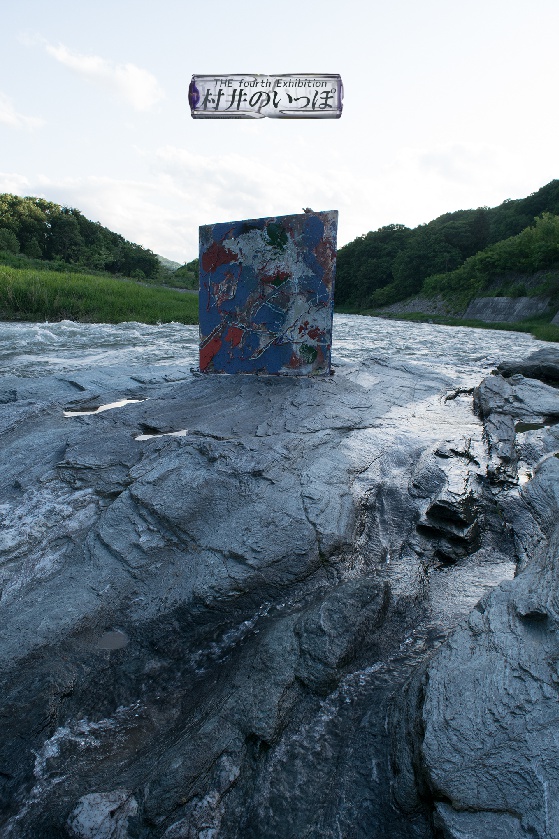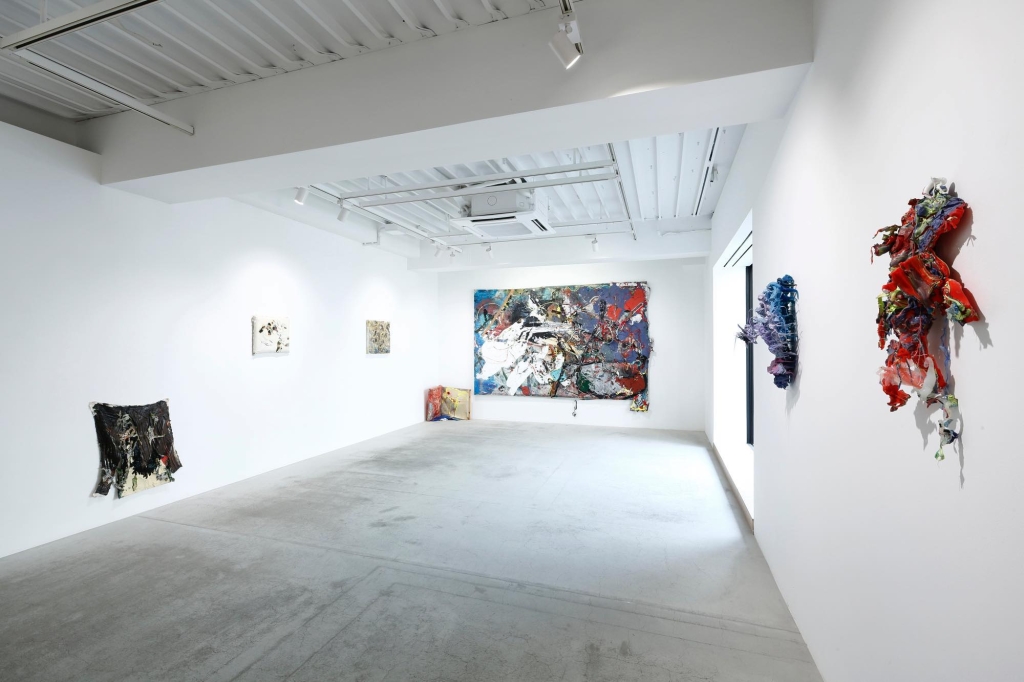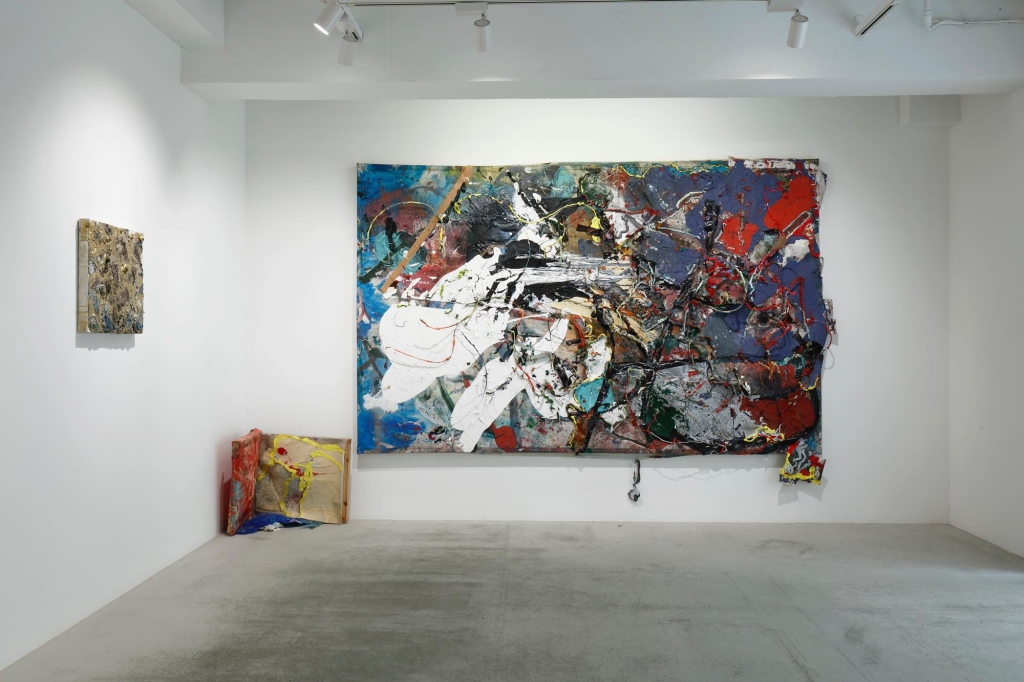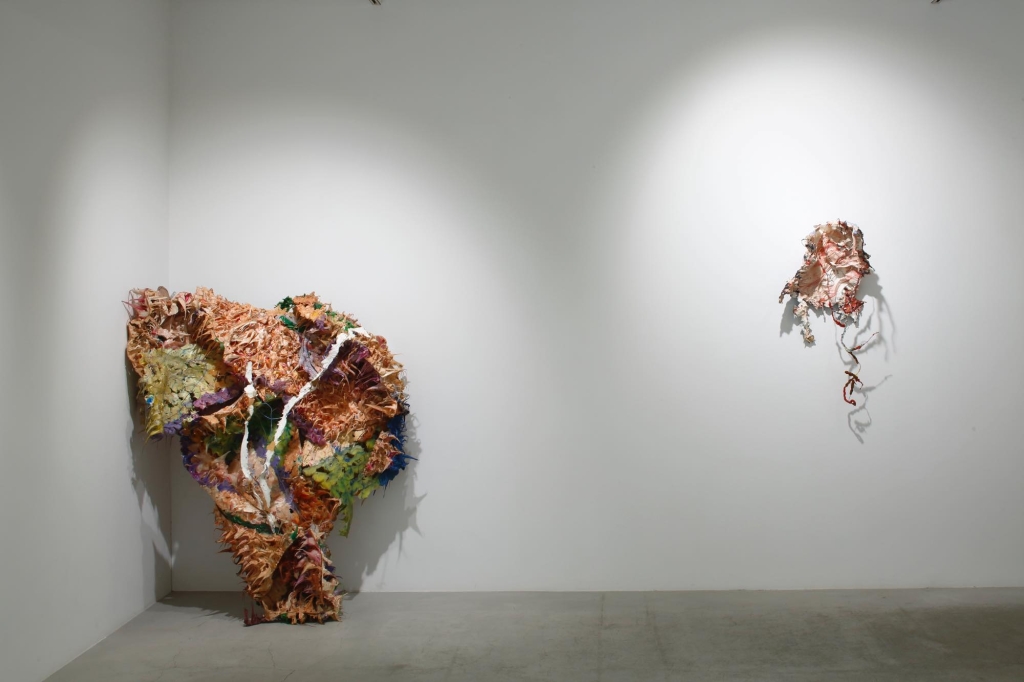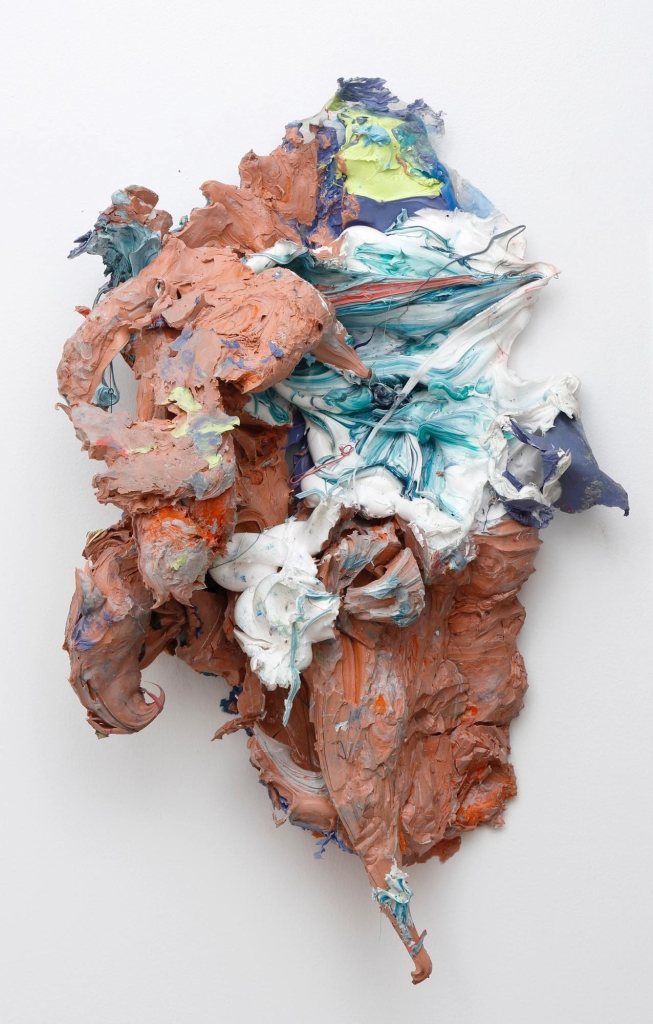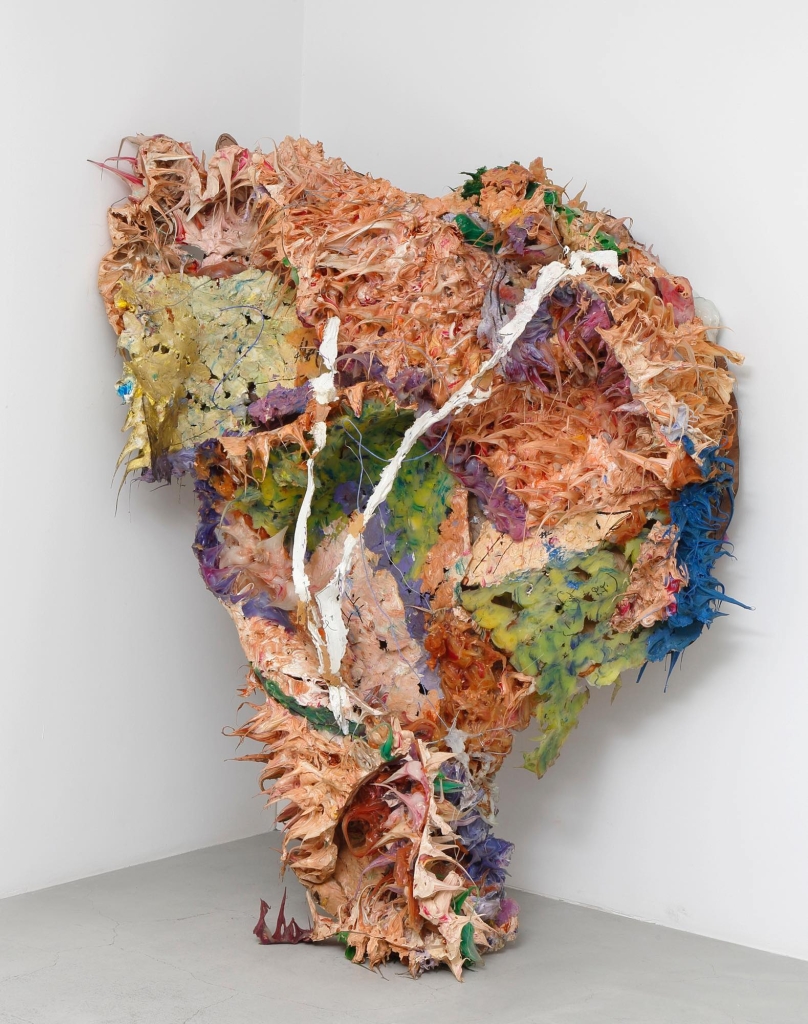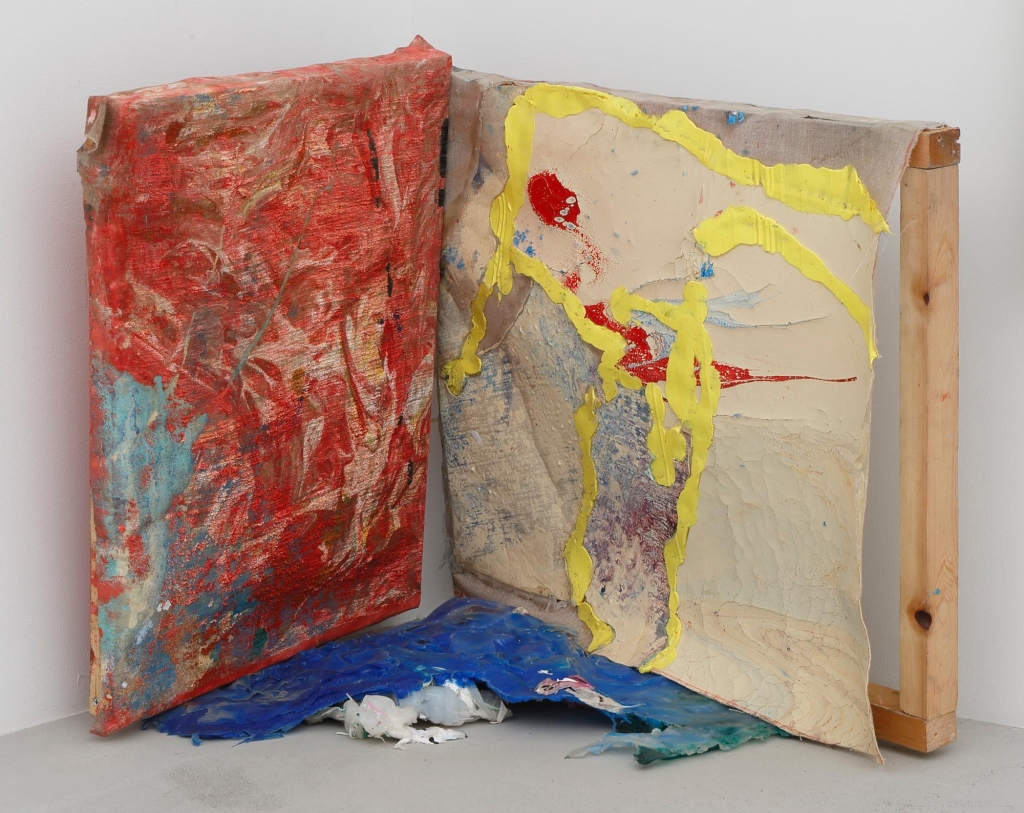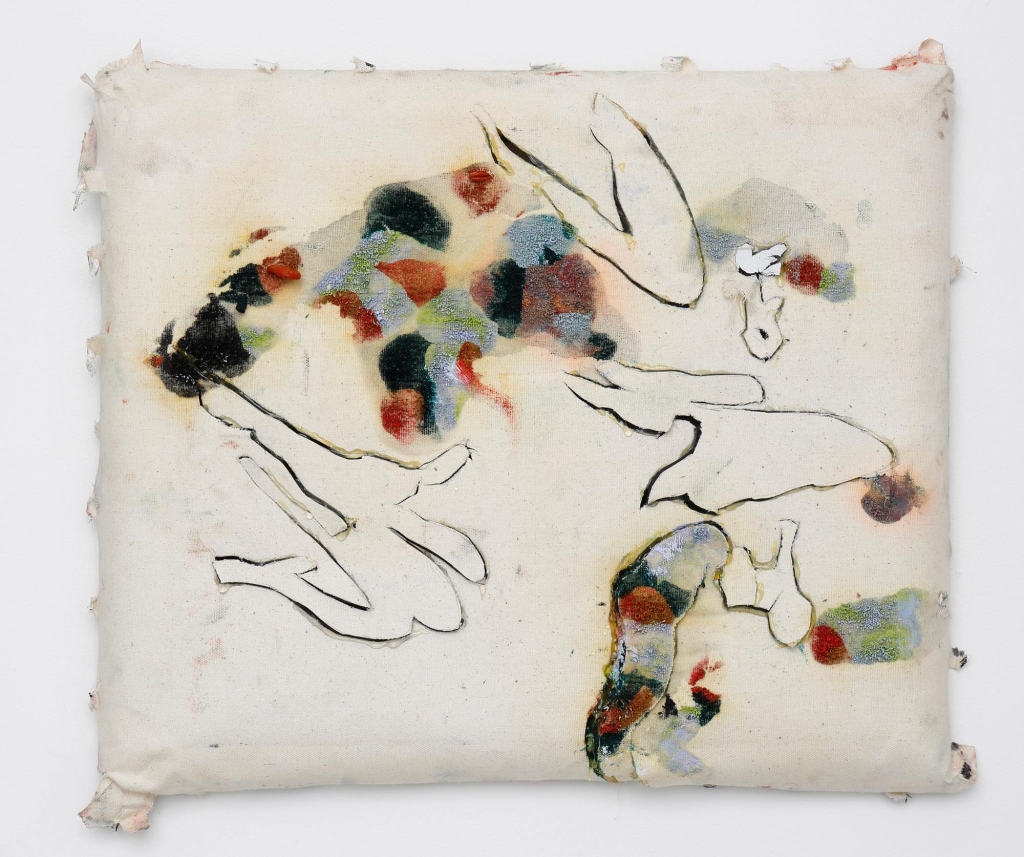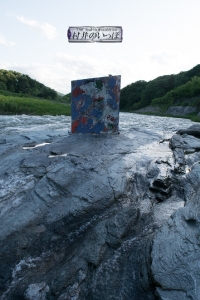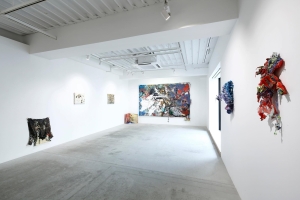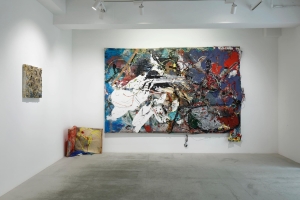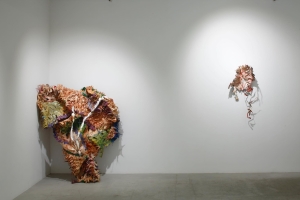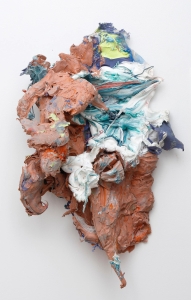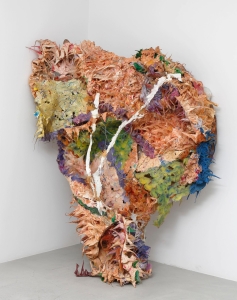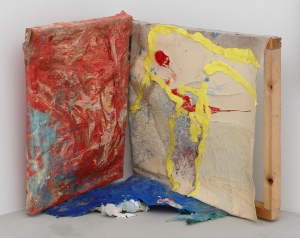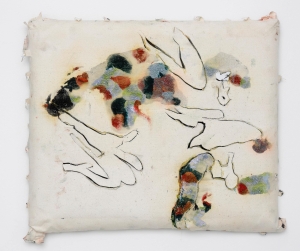Past
Murai no Ippo
Yuki Murai
Jun 28 (Thu.) - Jul 28 (Sat.), 2018
MAHO KUBOTA GALLERY presents a group of new paintings by twenty-three-year-old prodigy, Yuki Murai, based on the artist’s strikingly original ideas and novel physical structures. Murai’s powerful ability to break through barriers can be seen from his highly productive career. First showing in public in 2015 when he was studying at Tama Art University, he has already presented three solo exhibitions and participated in 17 other exhibitions, including the Setouchi Triennale, and has won awards at three significant open exhibitions for young Japanese artists in rapid succession. Murai has already become a full-fledged artist at a young age. His practice, his almost-excessive writing, and his lifestyle, are all integrated in his art. One of the perspectives of this solo exhibition is to examine whether a commercial gallery art platform can do justice to this whole practice.
Murai has continually created groups of artworks for the purpose of breaking through the conventions of painting. Murai’s most potent weapon for challenging the proposition of existing painting is a medium of his own making called ‘omurice paint.’ Compared with the medium of most conventional paintings, which Murai asserts is nothing more than material for manipulating superficial visual information within the framework of painting, the artist asserts that ‘omurice paint,’ which is made from silicone mixed with oil or acrylic paint, is an active material with its own identity. Having discovered in this material the possibility of gaining independence from the canvas, which is the conventional foundation of painting, Murai has tried to find a route to break through the eternal proposition that is painting by creating groups of artworks that include experimental and extemporaneous works such as wearable paintings, rotating paintings, paintings that are recycled and lose the subject due to being trampled underfoot by viewers, and paintings that completely cover a space.
Having created a material that can be independent and used it in his art, incorporating elements of chance, the artist now wants to push that approach to the next level in this exhibition. Although wearable and rotating paintings definitely succeed in transcending the physical framework of painting, they are simply formed within the intentional or phenomenon-related framework of being worn or becoming moving objects. Murai believes that the purpose lies within the artist himself, and that in order to further transcend these frameworks, it is necessary to add forces from other vectors. Believing that relationships with others can be effective in enabling conceptual frameworks by the subject to become invisible, Murai has repeatedly engaged in discussions with fellow artists of the same generation, Meigen Shojima and Kenichi Nojima, for days on end.
Murai is the driving force behind the art, but his own identity is transformed and loses form during discussions with Shojima, while Nojima records this process. The process of creation is an experimental attempt to liberate paintings from Murai’s personal intentions by using the identity of others to erase Murai’s identity after it had been partly incorporated into the work. The physical and conceptual foundation of expression that is shaken by the process of discussion loses form and disappears completely through further debate, causing the artist’s identity to vanish, leaving behind only whatever was produced by the omurice paint. Murai believes that only then does an original painting emerge that is in no way reminiscent of the shape of past paintings or conventional phenomena.
Murai’s painting has overwhelmed viewers with its excess and chaos. How will it change through discussions with others from the same generation, and can it be viable in the context of a real-life art platform? Will Murai actually be able to resolve the issues he himself presents at this exciting solo exhibition, entitled Murai no Ippo? Transcending the superficial creation of images, the exhibition initially seems chaotic, but it eventually provides a visual experience by establishing an aesthetic in an intense space.



